March 21st, 2010
Fin Whale…Stranded…Delaware Beaches…Fenwick Island…
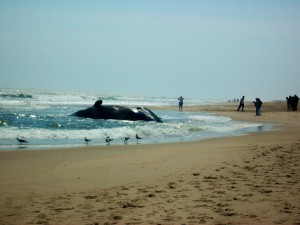
I have never seen a dead stranded whale. I decided to take a ride to Fenwick Island and see if I could find it. Driving from Rehoboth, the direction is south and a little bit before entering the town of Fenwick I saw cars parked on the side of the road by the beach. That was the site.
It was so sad to see such a majestic animal beached on such a beautiful day.
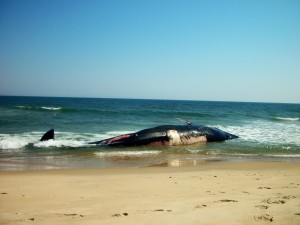
I still had to walk on the beach and I could see some people standing by the edge of the water. A representative from the MERR Institute was there and was giving information. The MERR Institute, Inc., located in Nassau, Delaware is a non-profit organization dedicated to the conservation of marine mammals and sea turtles.
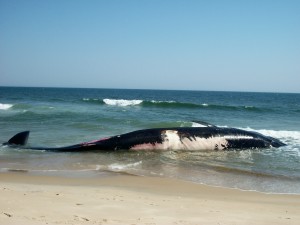
MERR stands for The Marine Education, Research and Rehabilitation Institute, Inc. It is authorized by the National Marine Fisheries Service and the State of Delaware to be the official stranding respondents for the Marine Mammals and Sea Turtles of Delaware.
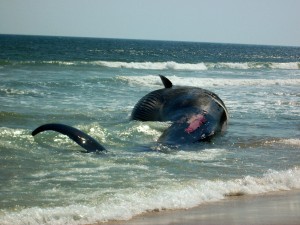
MERR responds to stranded marine mammals and sea turtles wether they are alive or dead. They conduct research on marine species, education and outreach programs for schools and groups. They participate in the Northeast Regional Stranding Network.
Please visit their website, www.merrinstitute.org. You may also e-mail them to merrins@earlink.net. Their telephone number is 302-228-5029. This also the number for the Stranding Hotline. If you ever encounter such a situation, please do not disturb or attempt to return a stranded animal to the water. This telephone number is the number to call at any time.
As a group of us were standing just staring at the whale, the MERR representative told us that this was a Fin Whale. It is the second largest whale known to man. This particular one was 62 feet. Already samples were taken for analysis. This whale was also middle age.
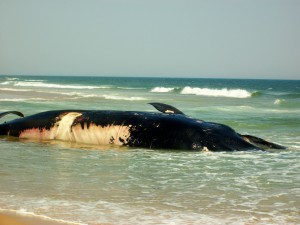
This whale will be transported to, I believe, an area of the State Park, and a necropsy will be performed. Apparently, the odor will be intense, to say the least. Then after everything is finished it will probably be buried. Every state has its own procedures in dealing with something like this.
Autopsy vs. necropsy? An autopsy is performed on humans and a necropsy is for any other specie. This info. is courtesy of my niece, Joanne, who is at vet school in North Carolina.
I wanted to find more info. on the Fin Whale and it was interesting to find out that besides being the second largest whale, it is also the second largest living animal after the blue whale. It can grow to be 88 feet long.
The Fin Whale is long and slender. The fin whale’s body is brownish-grey with a paler underside.
The whale has a series of 56-100 pleats or grooves along the bottom of the body that run from the tip of the chin to the navel that allow the throat area to expand greatly during feeding. It is a filter-feeder, feeding on small schooling fish, squid, and crustaceans.
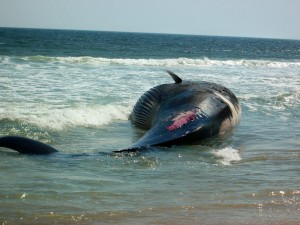
Fin whales have been known to leap completely out of the water. It is also one of the fastest whales with speed of 23 miles per hour.
The Fin Whale was heavily hunted during the 20th century and is an endangered species, with only about 3,000 remaining in the Southern Hemisphere.
I asked the MERR volunteer what she thought it could have happened to this whale and she said that until its necropsy is finished they will not know. But she did mention that apparently a report was called in that a ship in the Channel had hit a whale and the whale went under. It is not sure if it is this whale, but they will look for signs of trauma and a broken jaw.
I said how sad and she said not to be; a lot will be learned from studying this beautiful whale.
Note: Information on Fin Whales was taken from http://en.wikipedia.org/wiki/Fin_whale

See you…have a great evening….



18 Comments